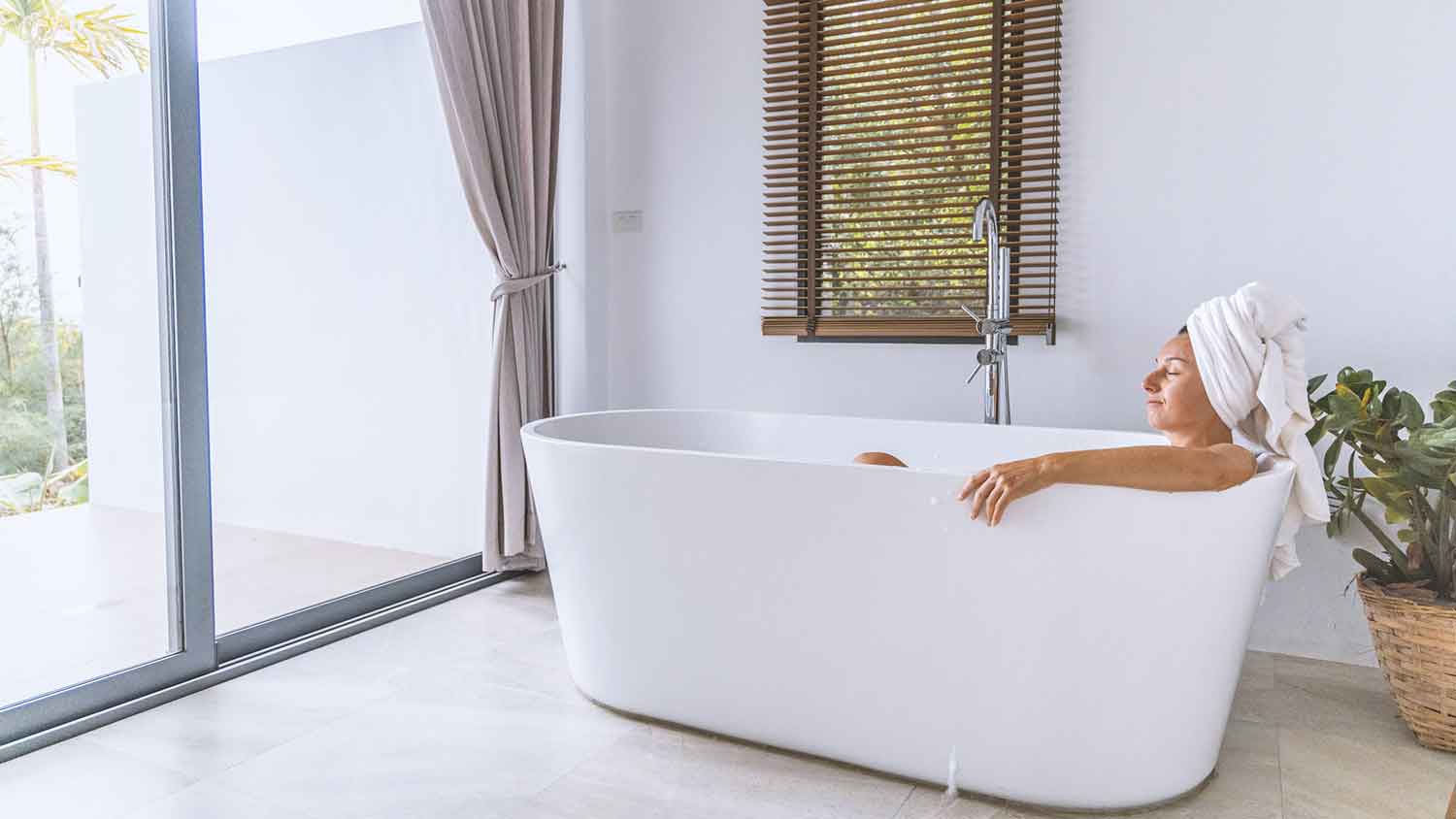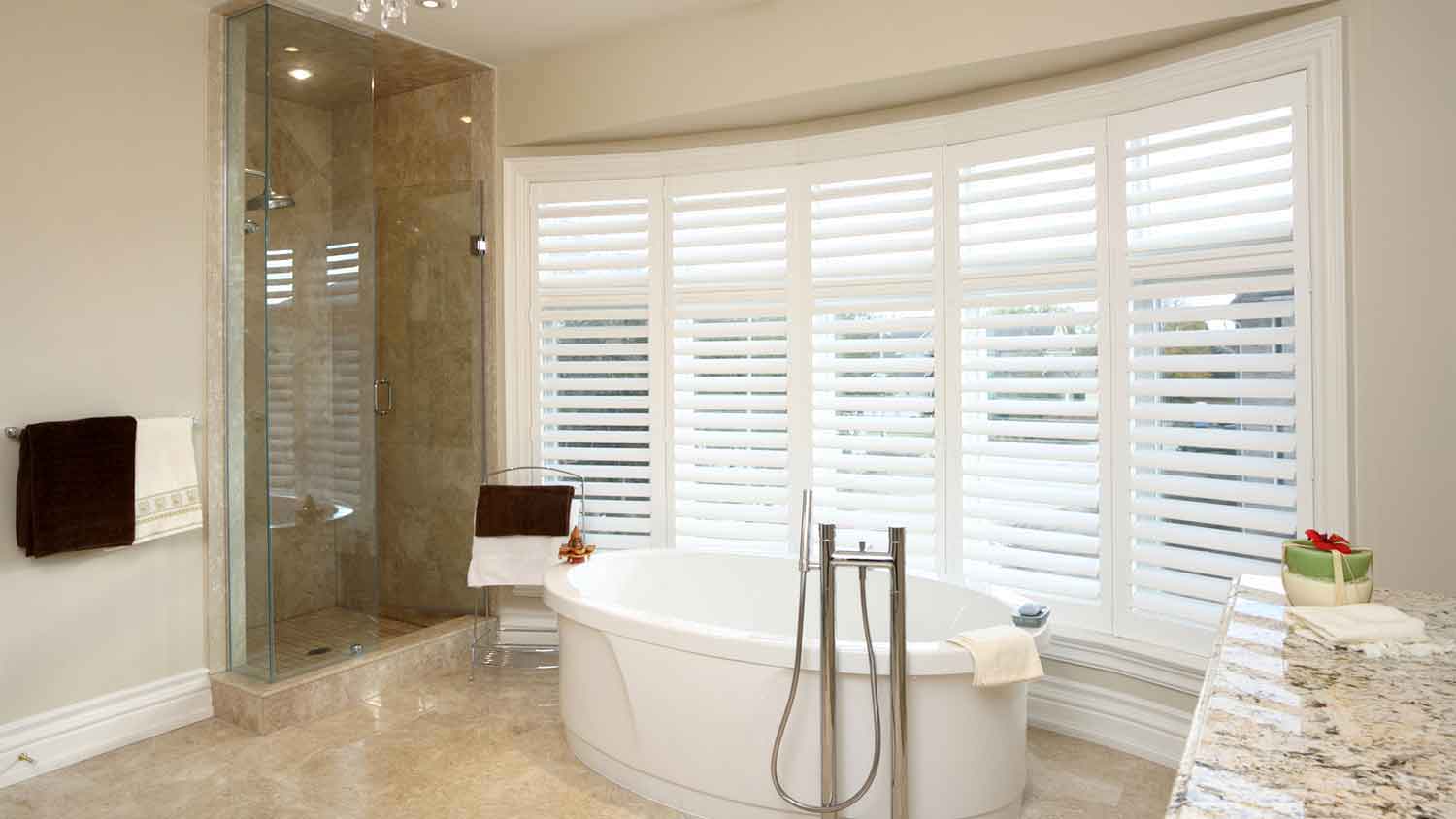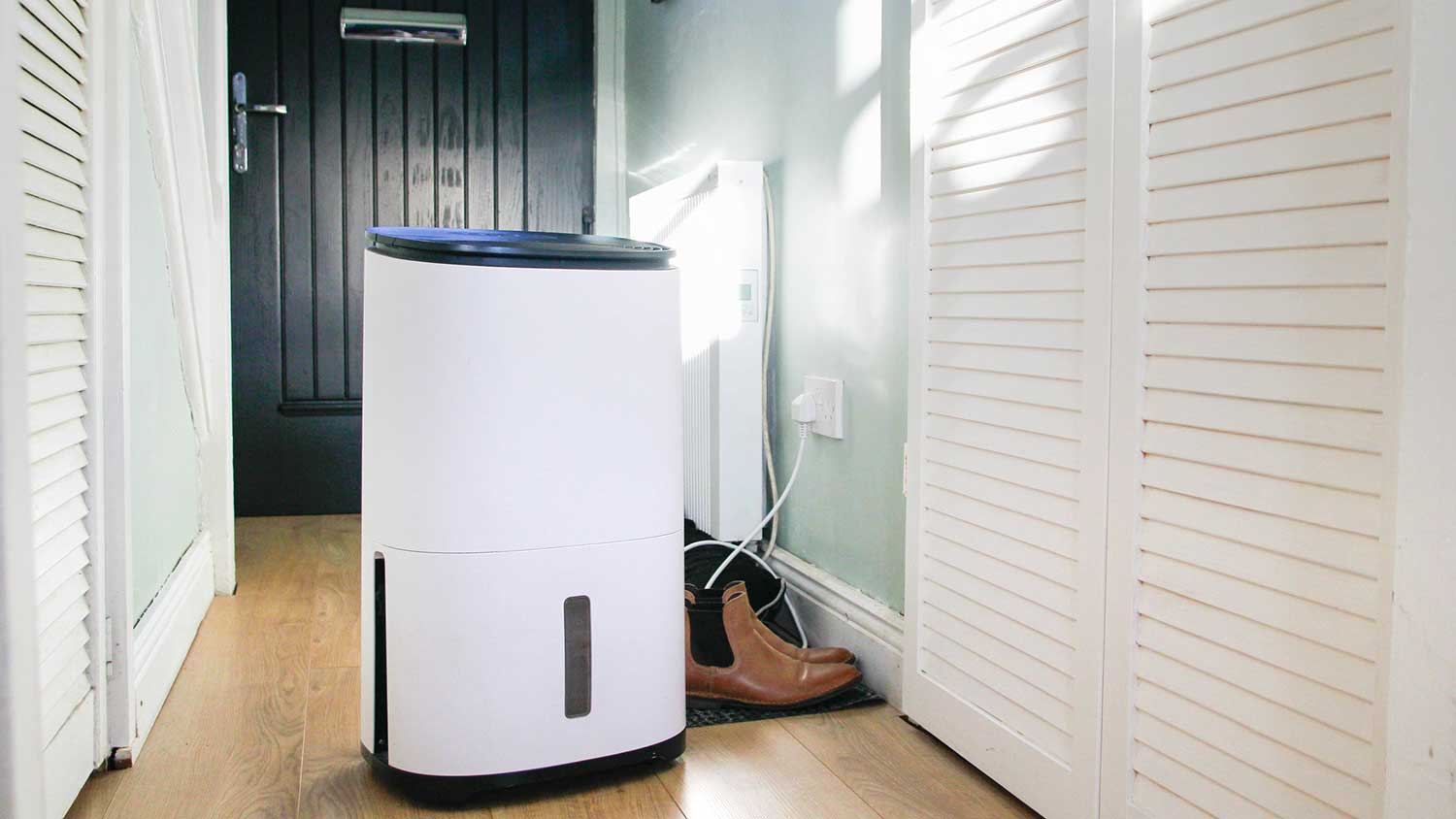Why Is My Bathroom So Hot? 5 Major Causes and How to Fix Them
Don’t sweat your sweaty bathroom—these tips can help


Bathrooms get hot when you take warm showers or baths.
Ventilation prevents heat and humidity buildups.
Poor insulation and sun exposure can make a bathroom hot.
An HVAC pro can help solve the problem.
You may have upgraded your bathroom with some spa-like features, but an accidental sauna probably isn’t one of them. An uncomfortably hot bathroom can make even the most relaxing showers feel stifling. Luckily, this is an issue you can probably fix with some ventilation and other mindful adjustments. This guide will help you get to the root of the question: Why is my bathroom so hot?
1. Lack of Ventilation
A major cause of uncomfortably hot bathrooms is a lack of proper ventilation. If the hot and steamy air from your shower or bathtub has nowhere to go, it will get trapped inside your bathroom and raise the overall temperature and humidity levels. This can foster mold growth and damage surfaces, like your wallpaper or drywall, in addition to making your bathroom hot.
The Solution
Air circulation is the key to solving ventilation issues. All bathrooms should have some form of ventilation. For a quick fix, you can crack a window when you shower. Ultimately, if you don’t have a ventilation system, the best route is to hire a local exhaust fan installation pro to install one.
2. Hot Showers or Baths

Heat from showers or baths can increase the temperature inside your bathroom by several degrees—especially if you have a well-insulated bathroom or take long showers or baths. This is normal to an extent, but if it’s getting uncomfortable, you may want to take action.
The Solution
Increasing ventilation is still the best solution. Beyond that, consider taking shorter, cooler showers to prevent steam from building up. Make sure your hot water heater temperature is set between 120 and 140 degrees Fahrenheit.
3. Poor Insulation
If your home is poorly insulated, heat can rise through your lower floors and find itself trapped in bathrooms on upper floors. If insulation is a problem, there will be signs like high cooling bills. You’ll notice the heat most during the hottest months, and it probably won’t be limited to your bathroom.
The Solution
Install better insulation throughout your home. This won’t just make your home more comfortable; it will increase your energy efficiency, which could save money in the long run. You’ll need to hire a local insulation pro to see what exactly your home needs.
4. Sun Exposure

If your bathroom has a lot of windows, the sun could be to blame. According to the U.S. Department of Energy, about 76% of sunlight that passes through standard double-pane windows turns into heat. This is especially prominent in south-facing rooms, which get the most sunlight.
The Solution
Window treatments like blinds, shades, or curtains can block the sunlight and keep your room cool. Honeycomb shades are one of the best options because the shape helps trap air and reduces heat transfer.
5. HVAC Problems
If your bathroom exhaust fan or air conditioning isn’t working properly, it could make your bathroom uncomfortably hot. You should be able to hear your fan or air conditioner running. If you rely on central air and other rooms are sweltering, it’s a good sign you need a service.
The Solution
You’ll need to hire an HVAC technician to diagnose the problem and make repairs. You should have your air conditioning serviced annually to prevent issues when the seasons change.
When to Call a Pro
There are a few DIY steps you can take to reduce the temperature in your bathroom, but if heat points to ventilation or HVAC issues, you should call a local HVAC repair pro. Bathrooms need working ventilation. A pro has the necessary skills to understand your options, make repairs, and install a suitable system—whether it’s air conditioning, an exhaust fan, or a cooling vent.
How to Prevent a Hot Bathroom
There are a few simple ways you can lower the temperature of your bathroom. It’s all about increasing air flow and reducing humidity.
Use the fan while showering: Remember to turn on your exhaust fan when you take a bath or shower.
Open the windows: If your bathroom has windows, cracking a window can let some of the heat and humidity escape.
Remove moisture when possible: Get rid of as much moisture as possible in your bathroom. Wipe down moisture from surfaces like your mirror, use a bath mat to absorb water, and store wet clothing and towels outside the bathroom.
Take shorter, cooler showers: Less heat and humidity, less of an impact it will have on your room’s climate.
Install a dehumidifier: If humidity is a repeated issue in your bathroom, you can install a whole-house dehumidifier. Air conditioning also works to dehumidify and cool off your space.
Add some houseplants: Houseplants can help absorb some of the excess moisture in your bathroom.
Frequently Asked Questions
When you take a hot shower or bath, the steam dissipates into the air and increases the temperature of your bathroom. This can make the room hotter than other rooms in your home, especially if it’s an upper floor that gets a lot of sun. On top of that, the high humidity in your bathroom can make it feel hotter than it actually is.
To get rid of humidity in your bathroom, you’ll need to increase ventilation and minimize moisture. Install an exhaust fan or dehumidifier. Crack a window. Remove wet towels and clothing. Wipe down surfaces to reduce standing water or condensation. You can even install an anti-fog mirror. Taking shorter baths and showers can help, too.





- Furnace Repair
- Air Conditioning Repair
- HVAC Repairs
- Furnace Installation
- Wood & Pellet Stove Repair
- Dehumidifier & Humidifier Repair
- Heat Pump Companies
- Swamp Cooler Repair
- Wood Stove Services
- HVAC Companies
- Commercial A/C Repair
- Geothermal Installation
- Air Conditioning Installation
- Boiler Repair
- 24 Hour Furnace Repair
- Geothermal Repair
- Heat Pump Repair
- Humidifier Installation
- Thermostat Repair
- Thermostat Installation
- Nest Installation
- Heating & Cooling
- Heating Repair
- Furnace Cleaning
- Furnace Tune-Up
- HVAC Technicians
- Subcontractors
- Furnace Maintenance
- Plumbing & Heating Companies
- Wood Stove Inspection
- Mini Split Installation
- Wall Heater Repair
- Duct Installers










